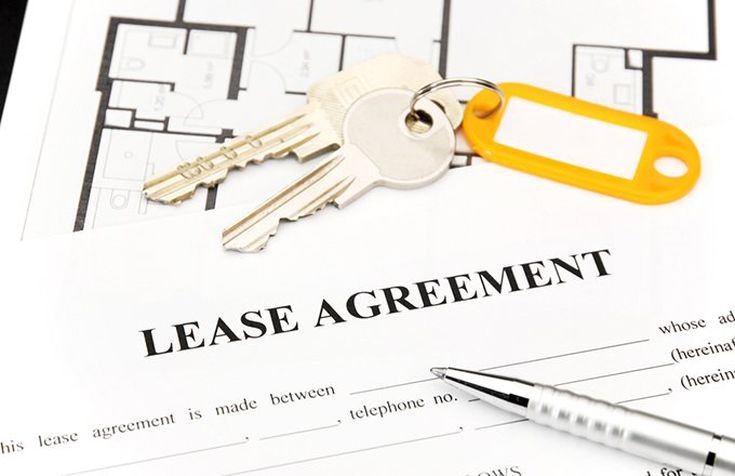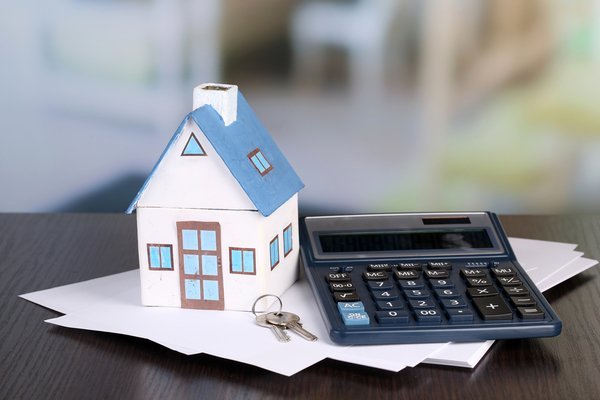Looking to sell a house and still to live in it?
Owners often prefer to sell their house and stay in it after closing. Many are unaware you can easily get cash for your house and continue to reside there after closing.
Real estate companies and rental investors specialize in buying houses quickly and efficiently, particularly in less-than-ideal conditions. They will buy your house and “rent it back”. Sell and rent back companies allow owners to sell and stay long-term as a tenant via a leaseback arrangement. This arrangement allows homeowners to access cash from their home equity without incurring debt through a home equity loan.
Want to learn more about how you can sell a house without having to move out after closing?
Read on to get all the details in our “Sell My House and Stay In It: The Ultimate Guide”!
- Can I Stay In My House After Closing?
- Method One: Stay For Free For a Short Time
- Method Two: Become A Tenant (“Leaseback”)
- Method Three: Home Reversion
- Who Will Buy My House and Rent It Back?
- How Much Rent Will I Pay?
- Example Documents
We Buy Houses (And Let You Stay In It!)
Call Us (954) 676-1846 or Fill Out This Form For Your FAIR Offer.
Can I Stay In My House After Closing?
You absolutely can continue to live in your home after you sell it.
Buyers understand purchasing owner-occupied property is a challenge and frequently agree to a short stay post-closing. Companies that buy your house and rent back to you offer the option to stay long-term as a tenant after the home sale instead of a short rent back period. These leaseback arrangements allow homeowners to access cash from their home equity without incurring debt through a home equity loan. Additionally, these companies provide flexibility by allowing sellers to choose their own closing date, accommodating the seller’s timeline and reducing stress.

You can sell your house without the stress of moving. Ask for a free post-closing stay, or to become a tenant to live at the residence long term and pay rent.
The bigger question for sellers is whether it makes sense to try to continue to live in the residence.
Remaining in the home after it sold has a drawback.
Buyers sometimes pay less due to post-closing occupancy. You get to stay after closing, and in exchange, give the buyer a break on price. It’s a trade-off. If you’re not in the financial situation to continue paying your monthly payment, then rent back agreements with your buyer could be a good deal for you!
Frequent reasons homeowners opt to stay after closing include:
Relocation
Sellers often don’t settle on a relocation plan until after they sell. Moving to a new place may not be possible until receiving sale proceeds (to make a down payment or first month’s rent). Sellers like to ensure their current home closes before incurring the financial obligations of a new one to avoid double housing expenses.
Preparing For The Move
Got a house full of stuff? Moving can be daunting. Weeks of planning, packing, and organizing may be necessary. You can calmly move out with a post-closing lease before moving to your new home.
The House Fits
Owners “sell and stay” for the cash from the sale (not because they want to move out). Bedrooms, bathrooms, and amenities may be a great fit. Perhaps you’ve grown to love the home or it’s your dream home. Living long term as a renter with a post settlement occupancy agreement is a good option to get cash now without giving up a favorable living arrangement. This option allows homeowners to access cash from their home equity without incurring debt through a home equity loan. You won’t have to keep paying property taxes or deal with upkeep on the home.
Great Neighborhood
Blue ribbon school district? Transportation access? Nearby family? Friendly neighbors? Job opportunities? Economic growth? All reasons to stay in the area. Selling with a long-term leaseback is an excellent solution if you love the neighborhood.
Introduction to Sell and Stay Programs
Sell and stay programs, also known as home sale-leaseback agreements, are innovative solutions that allow homeowners to sell their property and continue living in it as tenants. This arrangement provides an opportunity for homeowners to access cash from their home equity without having to move out. By selling your home and renting it back, you can unlock the value tied up in your property, giving you the financial flexibility to meet various needs, whether it’s paying off debt, funding a new venture, or simply enjoying a more comfortable lifestyle.
One of the primary benefits of sell and stay programs is the ability to remain in a familiar environment. You don’t have to deal with the stress and inconvenience of moving, which can be particularly advantageous if you have strong ties to your community, children in local schools, or simply love your current home. Additionally, these programs can offer a quicker and more straightforward home sale process compared to traditional home sales, as they often involve cash buyers who can close deals swiftly.
However, it’s important to weigh the drawbacks as well. While you gain immediate access to cash, you may receive less than the full market value of your home. Additionally, you transition from being a homeowner to a tenant, which means you’ll need to pay rent and adhere to the terms of a lease agreement. Understanding these pros and cons will help you make an informed decision about whether a sell and stay program is right for you.
What is a Sell and Stay Program?
A sell and stay program is a type of agreement where a homeowner sells their property to an investor and then rents it back. This arrangement allows homeowners to generate income from their property without having to vacate the premises. Sell and stay programs are often used by homeowners who need to access cash quickly, want to avoid the hassle of selling their property on the open market, or require a flexible living arrangement.
In a sell and stay program, the homeowner and the buyer agree on a sale price for the property. Once the sale is completed, the former homeowner becomes a tenant and continues to live in the home under a lease agreement. This lease agreement outlines the terms of the tenancy, including the monthly rent, lease duration, and any specific conditions or restrictions.
These programs are particularly beneficial for homeowners facing financial difficulties, such as those who need to pay off a mortgage, cover medical expenses, or manage other debts. By selling their home and renting it back, they can access the equity in their property without the need for a home equity loan or other forms of borrowing. Additionally, sell and stay programs can be a good option for retirees looking to downsize their financial commitments while remaining in a familiar and comfortable living environment.
Method One: Stay For Free For a Short Time with a Post Settlement Occupancy Agreement
Just need a brief period after closing to stay?
Request permission from the buyer to stay post-closing for a few weeks or months.
Buyers frequently allow post-closing occupancy – in many cases free of charge if you need temporary housing. Risk of accidental property damage is high if the seller is forced to race out the door. Happy sellers are more likely to protect the asset for the new owner.
The post-closing occupancy also gives the buyer’s offer an edge. An offer allowing a month post-closing free of charge is more likely to be accepted than one demanding the seller immediately vacate when they close on the home.
Getting a short period to live in the house after you sell it makes sense if you wish to relocate or move out in the near future.
A “leaseback” or “rent back agreement” is a better option to stay in the home for a year or more.
Method Two: Become A Tenant (“Rentback” or “Leaseback”) with a Rent Back Agreement
Have you considered selling your house for a lump sum of cash and becoming a tenant? Buyers often pay cash for homes, making the transaction quick and efficient.
Homeowners often are unaware of this option. It’s a terrific way to cash out home equity without rebuilding your life in another location. Negotiating seller’s occupancy with a rent back agreement is a great way to sell your home and continue to live there. Sure, making rental payments on a home you used to own may seem strange. But it makes sense if you want to get extra income and remain in the home.
Buyers are often willing to negotiate a rent back agreement with the seller for up to five years or even longer in some situations. This is an ideal solution – getting paid today while continuing to live where you currently reside.
LegalMatch defines a lease back like this: A seller leaseback, also called a seller rent back or sale-leaseback, is a financial transaction in which a person sells property and then leases or rents from the new property owner. In this scenario, the seller no longer owns the property, but lives in the property for the length of time stated in the rental agreement. The seller realizes profit from the sale of the property while the buyer is assured of rental income from the lease agreement. The key steps to a leaseback are as follows:

- Buyer and owner agree on sale price and closing date.
- Buyer and seller agree on a lease term, including monthly rent and length of rent back period.
- Buyer and seller execute the purchase contract and lease agreement.
- Upon closing, the owner receives the lump sum cash payment and transfers ownership to the buyer.
- The previous owner makes a security deposit and is now a tenant in accordance with the terms of the agreed upon lease.
Pay attention to lease details. The “terms” of the lease agreement often determine whether the leaseback will be a positive experience. Important lease terms for most prospective tenants:
- Termination Date and Renewal Options. Most rent back agreements terminate after 12-months and do not auto-renew. However, each lease and state is unique.
- Security Deposit. Payment to the landlord to ensure that rent will be paid and other tenant responsibilities complied with.
- Rent Payment Grace Period. Window of time, typically 3 to 5 days, that tenants have to pay rent before incurring a late fee.
- Fixtures Provided. Most apartments come with kitchen appliances. Make sure to ask the landlord if these will not be provided.
- Remodeling Restrictions. Like to paint? Install a TV on the wall? Check the rules before making modifications.
- Homeowners Association Rules. Townhouses and condos typically belong to a “Homeowners Association” that specifies rules and regulations for all occupants.
- Number of Occupants Allowed. Got a big family? Planning for children? The written lease could limit your options.
- Guest Policy. Like to entertain overnight guests? Some landlords restrict the hours and number of guests.
- Subletting Policy. Subletting occurs when a tenant rents out the property they are leasing from the landlord.
- Pet Policy. Landlords and buildings often restrict pets by size, weight, and type.
- Renters Insurance. Protection for belongings and coverage for additional living expenses, should the rental become uninhabitable.
Method Three: Home Reversion
“Home reversions” are a tax-free form of equity cash out relied upon by the elderly to cover on-going living expenses. You sell the equity in your home for either a cash lump sum, monthly income stream, or both.
Compared to a traditional home sale, home reversion often results in lower profits but offers the advantage of bypassing the typical hassles associated with selling a home.
Typically, you get between 20 to 60% of the market value via the lump sum. When your home is sold in the future, the company that provided the home reversion receives a share of the proceeds and the rest goes towards your inheritance.
The advantage of home reversion plans is that you receive money to manage costs of living, remaining in your home long term, avoiding moving stress, and tax benefits.
The disadvantage is heirs have a reduced share, you get less than the full market value had you formally sold the home to a buyer, and maintain responsibility for costs of ownership (as opposed to becoming a tenant – when the landlord covers most costs).
Understanding Market Value and Cash Offers
When considering a sell and stay program, it’s essential to understand how market value and cash offers are determined. Knowing these factors will help you make an informed decision and ensure you receive a fair cash offer for your property.
How is Market Value Determined?
Market value is the estimated value of a property based on its condition, location, and current market trends. To determine market value, real estate agents and appraisers consider various factors, including:
- The property’s size, age, and condition: Larger homes or those in better condition typically have higher market values.
- The location and desirability of the neighborhood: Properties in sought-after areas with good schools, amenities, and low crime rates tend to be more valuable.
- The current housing market trends and prices of similar properties in the area: Recent sales of comparable homes (known as “comps”) provide a benchmark for determining market value.
- The property’s amenities and features: The number of bedrooms and bathrooms, square footage, outdoor spaces, and special features like a pool or updated kitchen can all impact market value.
Understanding these factors can help you set realistic expectations for the sale price of your home and ensure you receive a fair cash offer.
What is a Cash Offer and How is it Calculated?
A cash offer is a proposal made by a buyer to purchase a property without financing contingencies. Cash offers are often made by cash home buyers, who can provide a faster and more convenient closing process. The calculation of a cash offer takes into account various factors, including:
- The property’s market value: This is the starting point for determining a fair cash offer.
- The buyer’s desired profit margin: Cash buyers need to ensure a profit margin, which may result in offers that are slightly lower than the full market value.
- The costs associated with purchasing and owning the property: These include closing costs, property taxes, insurance, and any necessary repairs or renovations.
- The buyer’s assessment of the property’s condition and potential for renovation or resale: Properties in need of significant repairs may receive lower cash offers to account for the additional investment required.
In general, cash offers are lower than the full market value of the property, as the buyer needs to ensure a profit margin. However, cash offers can provide a faster and more convenient closing process, which may be beneficial for homeowners who need to access cash quickly. By understanding how cash offers are calculated, you can better evaluate the proposals you receive and make an informed decision about selling your home.
Who Will Buy My House and Rent It Back To Me?
The traditional course of selling a house goes like this: hire a real estate agent to list your home on the MLS, a prospective buyer is found, and at closing you move-out and the buyer moves in. This will be best for your home value, but when selling on the open market you have to expect the buyer will want to move in after the sale closes.
If you want to sell a house and stay in it, you need another option. You won’t get a leaseback off the MLS.
Buyers on the MLS generally intend to move in themselves. Even landlords like to fix things up and install their own tenants at the highest market rate. Negotiating rent backs from your home sale via real estate agents is rarely successful.



